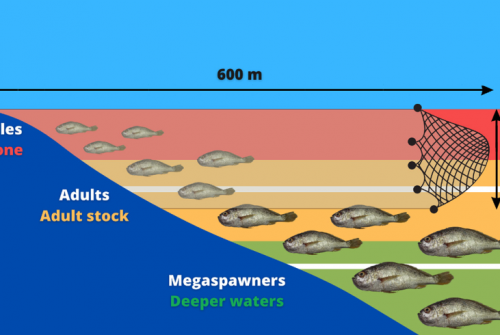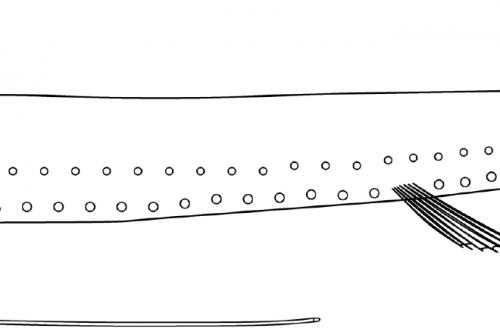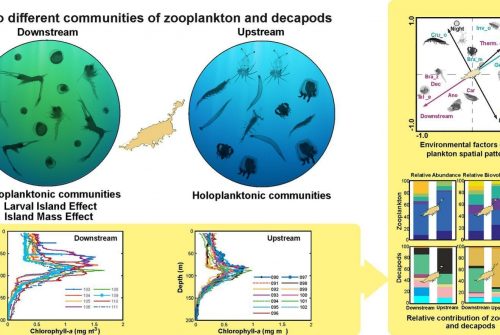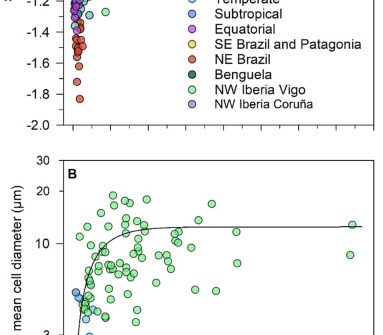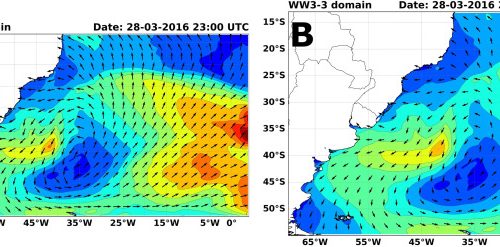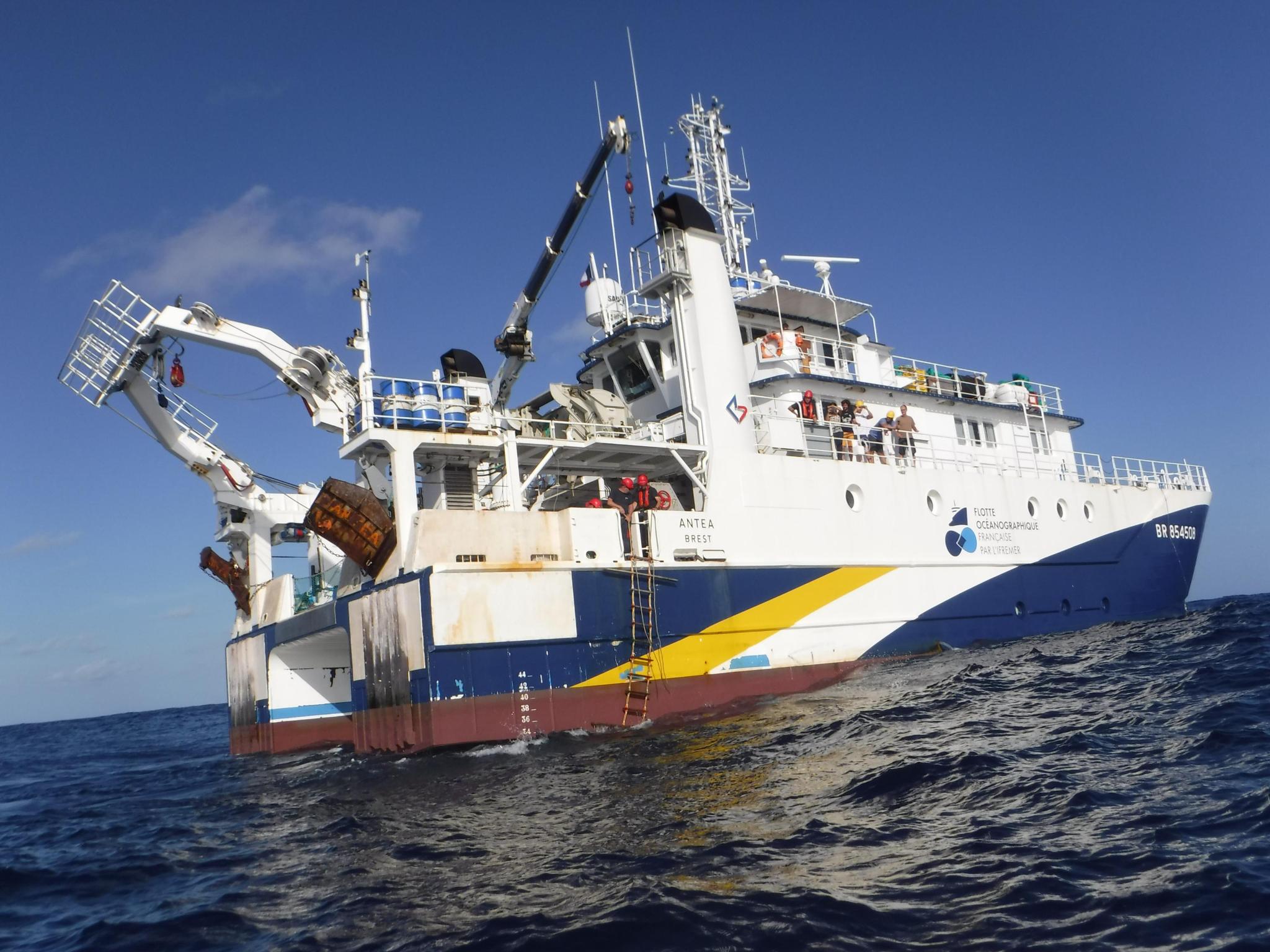
Objective: The Amazon shelf encompasses a variety of physical processes, such as fluvial inputs, coastal currents, mesoscale, filaments, tides, internal waves and upwelling, influencing nutrient concentrations, chlorophyll and suspended matter. They also affect energy, salt and heat balances; parameters that condition physical/biogeochemical interactions and ecosystem functioning, from bacteria to plankton to fish resources. In particular, internal tidal waves are very energetic in this region. They impact biogeochemical cycles via the vertical mixture induced by their dissipation or vertical movements induced by their propagation. They thus allow a significant input of nutriments into the euphotic layer enhancing primary production, as observed on the surface from watercolour data. Internal tidal waves could thus influence the biological pump and the carbon cycle. In addition, overall marine biodiversity of the region, from bacteria to fish is not well described. The connectivity of species in the tropical Atlantic is also still an open question. The Caribbean region is by far more bio-diverse than the Brazilian one. One of the hypotheses is that the Amazon plume, which can extend up to 3,000 km off the mouth, would constitute a barrier for some organisms. The Amazon Shelf is thus an ideal experimental laboratory to study the impact of physical processes on the structure and function of neritic and oceanic marine ecosystems. In this context, the objective of the multidisciplinary AMAZOMIX survey was to study the impact of the Amazon River plume, internal tides and associated turbulent mixing, on marine ecosystem in contrasting regions off the Amazon shelf. For that purpose, the multidisciplinary AMAZOMIX project brings together physicists, biogeochemists, bioopticians and biologists. The sampling strategy consists in the simultaneous acquisition of a comprehensive set of environmental and biological compartments, including micro-organisms (bacteria, phyto and zooplankton) and higher trophic levels (micronecton, demersal and pelagic fish). AMAZOMIX is the first campaign to develop this multi-disciplinary approach off the Amazon shelf. In situ results will be analysed in interaction with digital tools and data, modelling (1/36°, with and without tides, 1/12° coupled) and satellite data analyses. The survey is organized by the French Institute for Development (IRD), CNRS and CNES in France, Federal Rural University of Pernambuco (UFRPE), Federal University of Pernambuco (UFPE), Federal University of Pará (UFPA) and Federal Rural University of the Amazon (UFRA) for Brazil, and benefits from the structuring role of the International Joint Laboratory (LMI) TAPIOCA (IRD, UFPE, UFRPE). Technical services, research units and universities are associated to AMAZOMIX, of which: UMR MARBEC (University of Montpellier, IRD, Ifremer, CNRS), UMR LEGOS (CNES, CNRS, IRD, University Paul Sabatier), UMR LEMAR (UBO, CNRS, IRD, Ifremer), DT-INSU (CNRS), US IMAGO (IRD), UMR LOG (CNRS, IRD, University of Lille, ULCO), UMR MIO (University of Aix-Marseille, University of Toulon, IRD, CNRS), Federal University of Rio de Janeiro (UFRJ, Brazil), the National Brazilian Institute for Spatial research (INPE, Brazil) and the University of Porto (Portugal). The Rockland Scientific firm is also participating in the campaign as an industrial organization. In addition to the scientists on board, AMAZOMIX includes a whole team that will remain on land. A total of about 70 Brazilian, French and other countries' researchers are involved in the campaign, which will also have a research training role for about 50 international students. AMAZOMIX is the result of a longstanding federative work based on numerous funded projects, including the TRIALTAS European project and articulated through the LMI TAPIOCA (IRD, UFPE, UFRPE). It should also be emphasized that the analysis of the data collected will be carried out jointly by the different partners and that the findings will be pooled. The aim of this report is to resume the activities performed during the Legs 1 and 2 of the AMAZOMIX survey and to assemble in a document the main protocols. Report redacted aboard the R/V Antea in the 29/09/2021 Chief Scientist Leg 1 and Leg 2: Arnaud BERTRAND, IRD/MARBEC Legs 1 and 2: R/V ANTEA 27/08 – 29/09, 2021 DOWNLOAD Report in PDF


